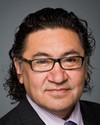Thank you, Madam Chair.
Thank you to our witnesses today for their contribution to this committee.
Dr. Lafontaine, you spoke about transformation, and for once somebody's on the same page as me on these kinds of things. I've always felt that I'm in the status quo process myself, being part of this committee. I know this committee will provide a decent report to government. As for what will happen after that, your guess is as good as mine, but it's been like that for 150 years, since Confederation. This government has not even bothered to comply with an order of the Canadian Human Right Tribunal, so what about a report from a committee?
I heard you very clearly with respect to the kind of transformation this country needs with respect to all the issues we're dealing with. It's not just suicide. There are interrelated and interlinked aspects to this crisis, including housing and everything else.
You spoke about the perpetual aspect of what we're dealing with, the colonial outcomes, and how the system needs to change. If you had to the reins of this country for a day, where would you start?



